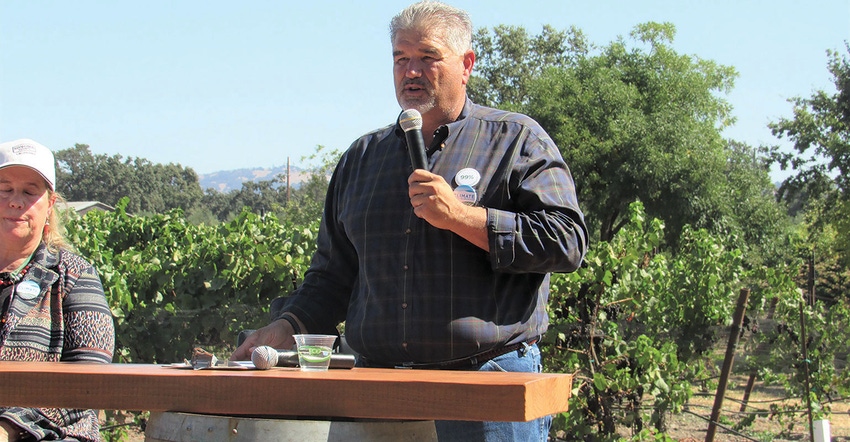
Statistics, as Mark Twain once wrote, are pliable.
Nonetheless, the grape crush numbers for 2020, both preliminary and objective postings from the USDA National Agricultural Statistics Service, are pretty much spot on.
The 2020 crush totaled just under 3.6 million tons, down almost 14% from the record 2019 crush of 4.1 tons. Red wine varieties accounted for the largest share of all grapes crushed at 1.8 tons and even that was down 16% from the previous year. White wine variety crush came in at close to 1.6 tons, down 9.8%.
Among other notable numbers, the 2020 average price of all varieties was $674.72, down almost 17% from 2019’s average pricing.
Responding to those numbers, the Wine Industry Network presented a vineyard/grower virtual conference called Growing Forward, a reflection of the California grape crush report and its implications for 2021.
“This is what we see going on in the industry today,” said moderator Glenn Proctor, representing global grape broker Ciatti. “There was a lighter yield in general and 2020 harvested total tons were down in all areas, particularly the North Coast. If you look at tons by variety, everything was down, a reflection of wildfire smoke concerns. One thing that was surprising was statewide average pricing-per-ton with cabernet sauvignon and pinot noir down significantly, reflective of an oversupply situation.
“As we begin 2021, we have a much lower inventory on the bulk market,” he said. “The biggest change the 2020 short crop will create is a limited bulk availability that has spurred a rebound in terms of grape market activity. Because we’re still in a pandemic with all those unknowns and uncertainties, that gives us a bit of pause trying to understand where the market is going in the future.”
Fellow broker Johnny Leonardo, who concentrates on the Interior regions, took those 2020 numbers and tried to look ahead to the current year’s reaction.
“Reflective of the whole state, each individual district was down overall although each district had mixed results within certain varieties, a result of the amount of grapes crushed overall in the Interior,” he said. “If you combine the entire North and Southern Interior together, overall production came in at 2.6 million tons, a drop of 9%.
“Putting things in perspective, the largest Interior region in terms of total tonnage produced, is District 13, the Madera/Fresno area, which still accounted for 1.2 million tons with chardonnay down 9%, but cabernet actually going up 10%. In District 12, the Modesto area, it was the opposite with chardonnay up 10% and cabernet decreasing a significant 16%. In Lodi, the second largest region within the Interior, chardonnay, in particular, was hard hit, down 23%.”
Pre-planned rouging of vines
Noting that some of the decreases may be attributable to pre-planned rouging of low-yielding vines, Leonardo said he’s seeing a definite increase in demand now as grape prices are strengthening with multi-year (3-5 year) contracts being offered, “Something I haven’t seen in three or four years, a new look that has to do with a short bulk wine supply.”
Broker Todd Azevido offered details about Coastal area production trends. “By the end of 2020, a lot of bulk wine had been sucked out of the system,” he noted. “In the first quarter of 2021, I’m seeing the most active market I’ve seen in all my years in the industry with interested buyers from all corners of California seeking pricing information on more than just one year spot deals. We’re seeing multi-year deals being pulled along with a lot of activity outside the area.
“This is a positive thing and we’re watching it carry forward, hoping that Mother Nature doesn’t plan on kicking out two short crops in a row.”
For more news on pests, disease management and other issues affecting vineyards, subscribe to the bi-monthly newsletter The Grape Line.
Read more about:
GrapesAbout the Author(s)
You May Also Like




